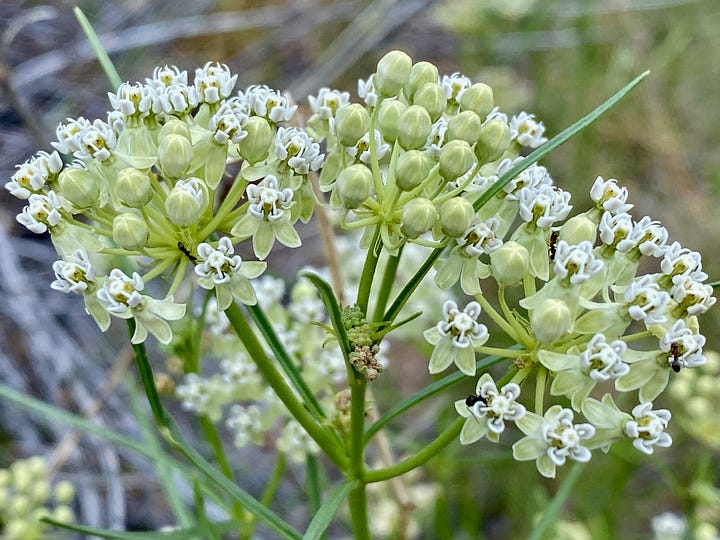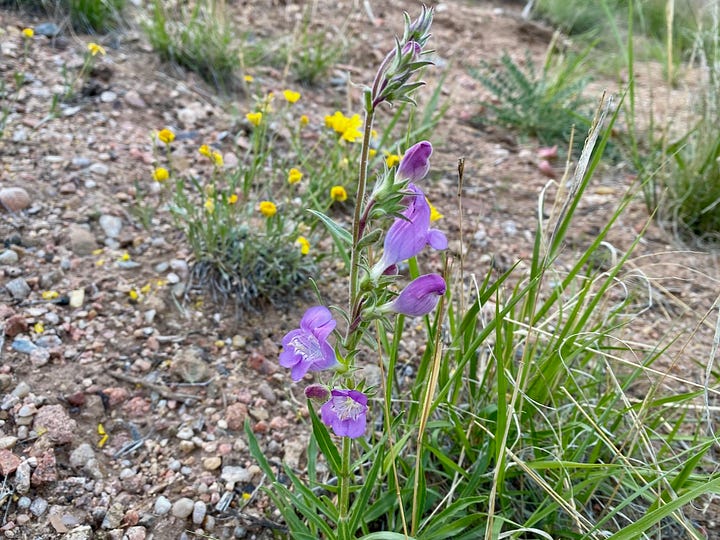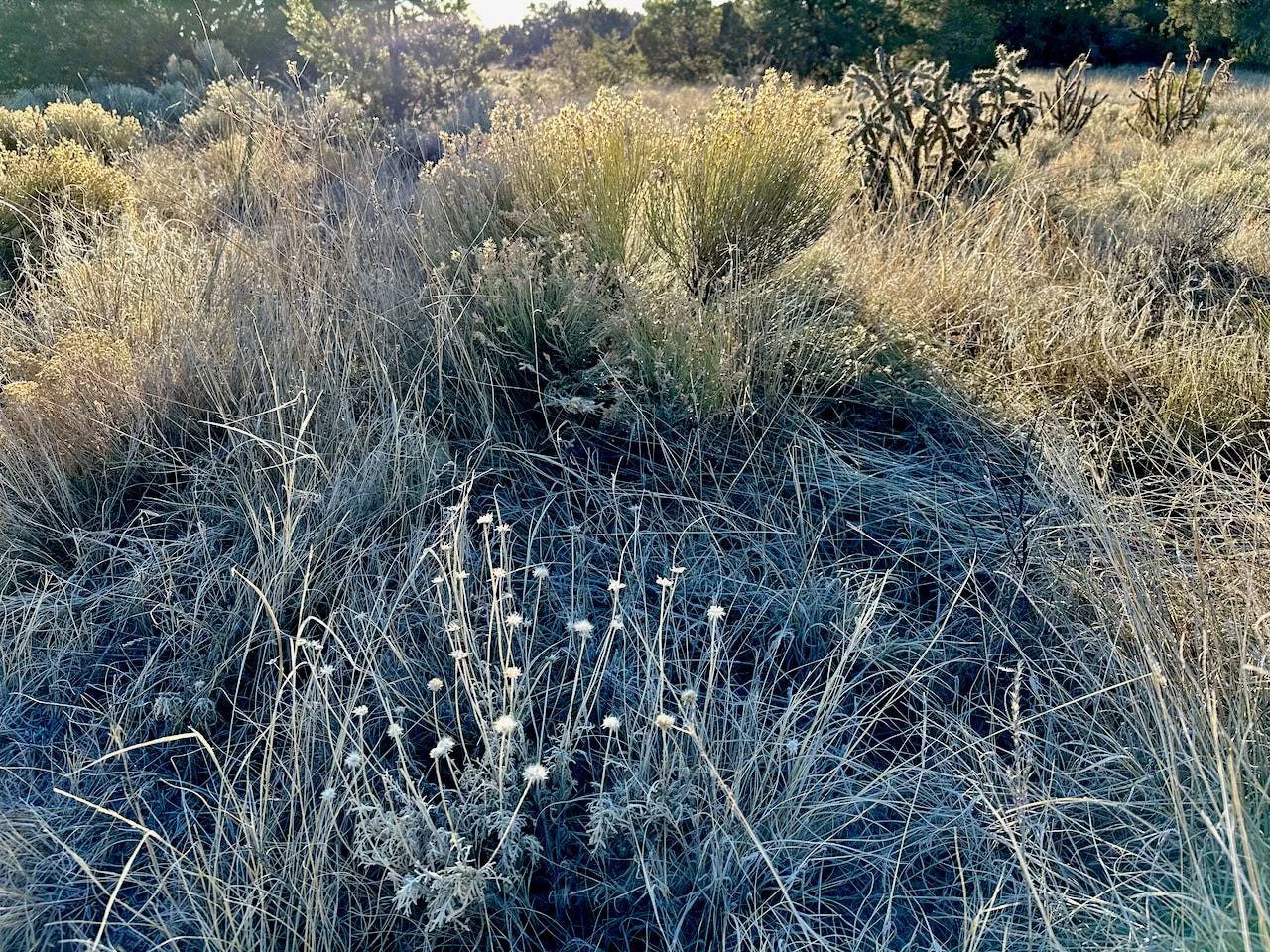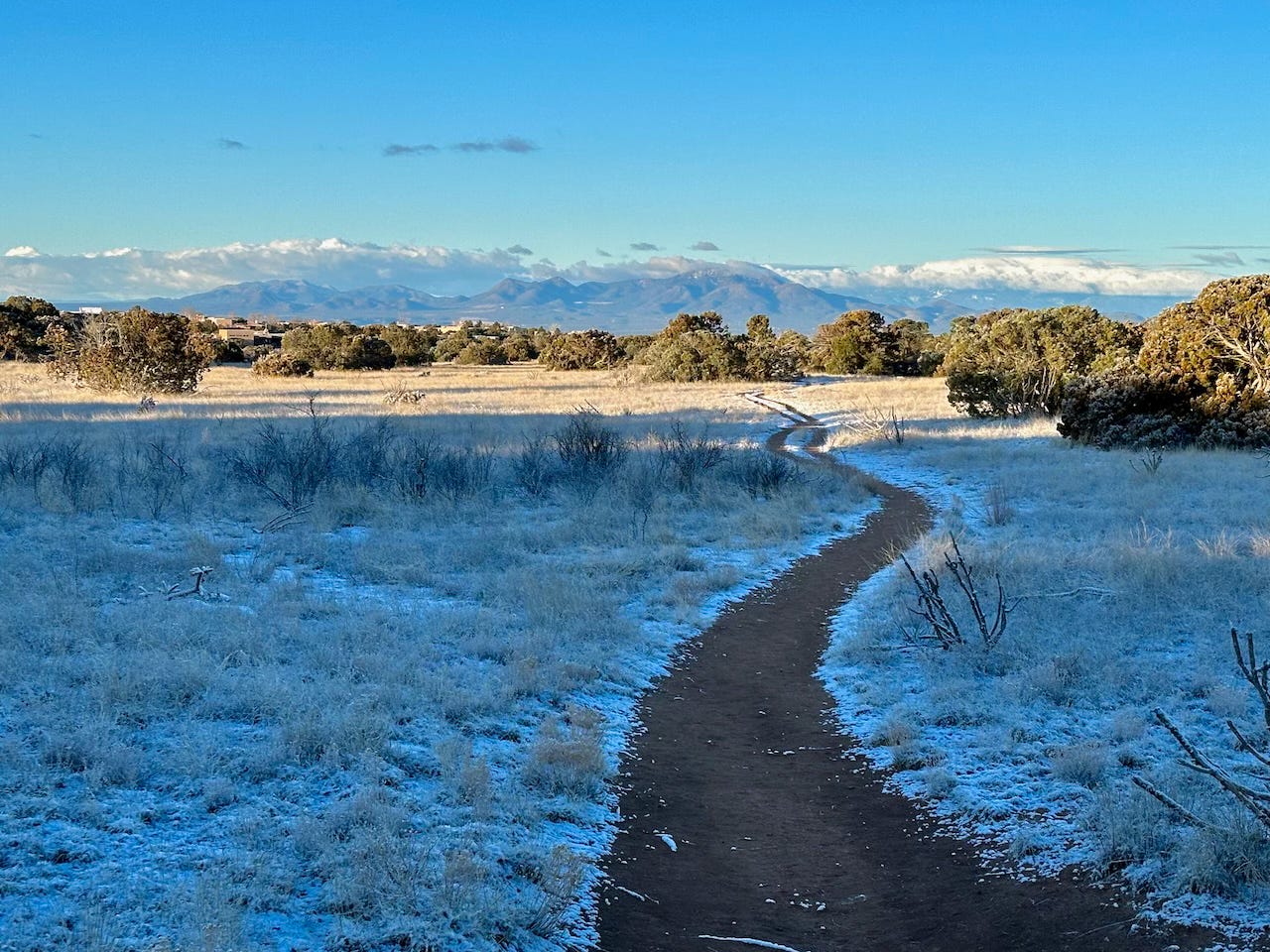Good morning, Friends. When I left my house in the moonlit dawn this morning, the air was 17 degrees F and the prairie was frosted with a skiff of new snow topped by sparkling hoarfrost, that beauty kept me moving forward instead of wimping out and returning to the warm house!
As I walked, greeting the winter-bleached grasses and wildflowers, I was reminded that I am grateful to live here where the Great Plains fingers into the piñon pine-juniper woodlands of the Southern Rocky Mountains.
This morning I am grateful in particular for the community of the prairie itself, the whole interwoven tapestry of lives that clothes this landscape in a living skin. The shortgrass landscape has not yet greened up with spring because here at 6,800 feet elevation, winter still holds sway. And green is never the predominant color of these water-challenged landscapes anyway.
As the great western writer Wallace Stegner said, to love the arid West, the dry country that runs from the western Great Plains to the east side of the Sierra Nevadas and coast ranges, you have to “get over the color green.”
Other than in the relatively well-watered mountain ranges and along the region’s sparse rivers and streams, green is shy here. Even in the most generous of years (which are becoming fewer and fewer with climate change), the water required for plants to remain vividly green is always in short supply.
It’s not that we don’t know green. It’s just a gift here, not a given.
In years with wet spring snows and summer rains, the high desert and prairie respond with a flourishing of life and lives that are vivid and intoxicating in their abundance. The landscape goes into party-til-you-drop mode, sprouting an ephemeral and rowdy enchantment of flowers and nectar, pollinators and singing frogs, baby quail and desert cottontails.




A wet season is a feast time, a raucous and fecund celebration of life that lasts until the soil dries out again and lives go dormant, migrate away, or hide as seeds and encysted eggs until the next round of moisture awakens them.
Living in this high-desert landscape requires me to search for beauty in the long dry and cold months, to appreciate the resilience of lives who can go dormant for months and then rejuvenate with a little moisture.
To recognize that what I see on the surface, above ground, is the tip of the proverbial iceberg: one square yard of prairie soil may contain 20 miles of roots! (That’s tallgrass prairie in the moisture-abundant Midwest. Here it’s likely a quarter of that, just 5 miles of roots in a square yard of soil. That’s still huge!)
More of a prairie community lives underground than above because the soil buffers those lives—whether prairie dogs or blue grama grass roots—from the extremes of temperature and drought.
Prairie plants store as much as 80 percent of their mass underground. Which makes prairies highly efficient at sequestering carbon, a principal way to fight climate change, because unlike forests, the bulk of that carbon is in the soil and cannot burn and return to the atmosphere as earth-heating CO2.

The dizzying diversity of lives who flourish in these arid landscapes, all interacting and interdependent, each participating to co-create the whole community of the prairie, reminds me that life flourishes with diversity. A lesson we humans forget to our peril. It truly does take all kinds to create healthy communities, nations, a healthy world.
This morning I am grateful to live in this snow-frosted high prairie with the sun warming the landscape and my house.
Because living here reminds me that finding beauty requires awareness, that celebrating abundance keeps us going, that diversity is integral to community and that miracles can happen on any ordinary day.
I am grateful to learn from nature.
In wildness is the preservation of the world. —Henry David Thoreau
Where is your nearby nature? What do you learn from time in the wild world? Hit the comment button below and share if you wish. Or just write some notes to yourself.





As I was reading your post, I kept thinking this is reminding me of something else. And then I got to this part: "Because living here reminds me that finding beauty requires awareness, that celebrating abundance keeps us going, that diversity is integral to community and that miracles can happen on any ordinary day." Such a beautiful reflection.
Growing up in the Northeast, my concept of beauty did indeed focus on rolling hills and greenery. However, all that changed when I got off the plane in ABQ in 1991 and began the drive north to Santa Fe. The power of brown and its many shades and manifestations claimed my soul and made me realize I needed to live here. I finally got to move here in 2002 and 've remained faithful to this magnificent terrain ever since.